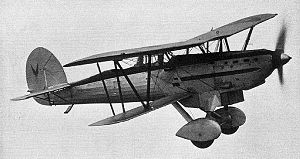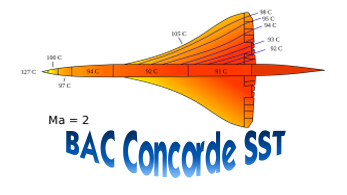Fairey Aviation
Fairey Fox bomber
|
|||||||||||||||||||
|---|---|---|---|---|---|---|---|---|---|---|---|---|---|---|---|---|---|---|---|
.
History Fairey Aviation Company Limited
Fairey Fox was a British light bomber

In 1923, Charles Richard Fairey, founder and chief designer of Fairey Aviation, disappointed with his Fawn bomber, which owing to the constraints of Air Ministry specifications, was slower than the Airco DH.9A which it was meant to replace while carrying no greater bombload, conceived the idea of a private venture bomber not subject to official limitations, which could demonstrate superior performance and handling. On seeing the Curtiss CR, powered by a Curtiss D-12 V-12 liquid-cooled engine of low frontal area and in a low drag installation, win the 1923 Schneider Trophy race, Fairey realised that this engine would be well suited to a new bomber and acquired an example of the engine and a licence for production.
The Fairey Fox was a British light bomber and fighter biplane of the 1920s and 1930s. It was originally produced in Britain for the RAF, but continued in production and use in Belgium long after it was retired in Britain..

-
Fairey Fox Second generation

Second generation Foxes
In 1926 the Air Ministry drew up Specification 12/26 for a new light-bomber for the Royal Air Force. Unlike previous specifications, high performance was stressed, and many of the overly prescriptive requirements which had previously limited performance removed. At first, Fairey was not informed of the new specification, and only received a copy after protesting to the Air Ministry. To meet the requirement, Lobelle's team designed the Fox IIM, effectively an all-new aircraft with a metal structure as demanded by the Specification, and powered by a Rolls-Royce F.XIB (later named the Rolls-Royce Kestrel. It first flew on 25 October 1929. The competing Hawker Hart and Avro Antelope prototypes had been flying for over a year by this time, and the Hart had received an initial production order in June 1929.[10] Although the Fox IIM was not wanted by the RAF, Fairey demonstrated it to the Belgian Air Force, which wanted a light bomber to replace its Breguet 19s and had already bought Fairey Firefly II fighters from Fairey which had also set up a Belgian subsidiary, Avions Fairey, to build the Firefly. The Fox IIM was successful, winning an initial order for 12 Fox II reconnaissance aircraft to be built in England, with further production to come from Avions Fairey
Photo Gallery
Fairey Aviation Company Limited
Fairey Fox was a British light bomber


Fairey Aviation Company Limited
Fairey Fox was a British light bomber
General Info 1
-
-
- Crew: 2
- Length: 30 ft 9 in (9.37 m)
- Wingspan: 37 ft 11 in (11.56 m)
- Height: 11 ft 6.5 in (3.518 m)
- Wing area: 362 sq ft (33.6 m2)
-
General Info 2
-
-
- Empty weight: 2,920 lb (1,324 kg)
- Gross weight: 5,170 lb (2,345 kg)
- Powerplant: 1 × Hispano-Suiza 12Ybrs V-12 liquid-cooled piston engine, 860 hp (640 kW)
- Propellers: 2-bladed fixed-pitch propeller
-
General Info 3
- Maximum speed: 224 mph (360 km/h, 195 kn)
- Range: 634 mi (1,020 km, 551 nmi)
- Service ceiling: 32,800 ft (10,000 m)
- Time to altitude:
-
- 16,400 ft (5,000 m) in 6 minutes 30 seconds
- 19,700 ft (6,000 m) in 8 minutes 21 seconds
General Info 4
-
-
- Guns: 2 × forward firing machine guns and 1 × rear gun
- Bombs: 220 lb (100 kg)
-
.
Links to Youtube & Others
In 1926 the Air Ministry drew up Specification 12/26 for a new light-bomber for the Royal Air Force. Unlike previous specifications, high performance was stressed, and many of the overly prescriptive requirements which had previously limited performance removed.
Fairey Aviation
Fairey Foxes I/II
The Fox entered service with No. 12 Squadron RAF in June 1926. The Fox proved to have spectacular performance
Youtube Link
Over 100 Foxes were still in front-line service with the Belgian Air Force at the time of the German invasion on 10 May 1940.












